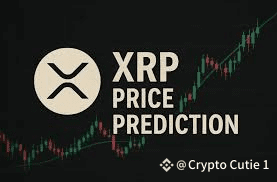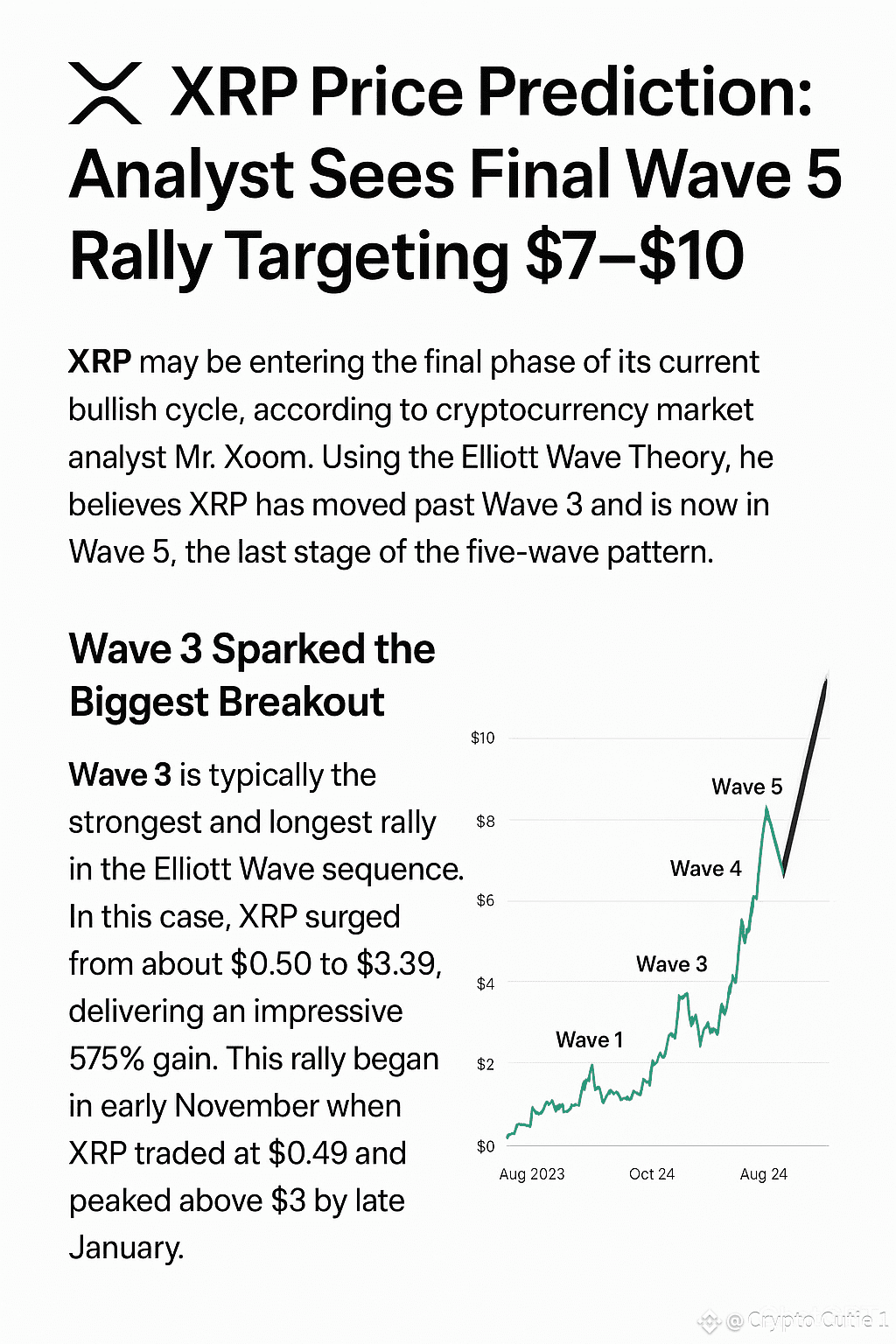XRP may be entering the final phase of its current bullish cycle, according to cryptocurrency market analyst Mr. Xoom. Using the Elliott Wave Theory, he believes XRP has moved past Wave 3 and is now in Wave 5, the last stage of the five-wave pattern.

Wave 3 Sparked the Biggest Breakout
$Wave 3 is typically the strongest and longest rally in the Elliott Wave sequence. In this case, XRP surged from about $0.50 to $3.39, delivering an impressive 575% gain. This rally began in early November when XRP traded at $0.49 and peaked above $3 by late January.
After the breakout, XRP entered Wave 4, a corrective consolidation phase. During this time, the token dropped below the $3 mark, fell under $2, and eventually bottomed out at $1.60 in April.

From that low, bullish momentum returned. Mr. Xoom’s chart shows that this $1.60 bottom marked the start of Wave 5. Since April, XRP has seen significant recovery, climbing to $3.66 in mid-July — a level not seen in nearly eight years — representing a 129% rebound from the April low.
Wave 5 Could Drive XRP to $7–$10
Historically, Wave 5 often brings strong but slightly less intense gains than Wave 3. With XRP now trading around $3.31, Mr. Xoom predicts the next upward move could push prices between $7 and $10 — an upside potential of 111% to 202%.
If XRP reaches $7, its market cap would approach $415 billion, comparable to companies like Netflix or Mastercard. A $10 price would push the market cap close to $600 billion, on par with Visa.
Other Analysts Support a Bullish Outlook
Several other analysts agree with the potential for higher XRP prices:
XForceGlobal, Korea’s first certified Elliott Wave analyst, forecast in April that XRP could break $10, citing a completed WXY corrective pattern and setup for a larger bullish trend.
In June, EGRAG used Elliott Wave and Fibonacci extensions to project a $9–$10 range, with a possible stretch to $27 if momentum accelerates.
Bottom Line
With technical patterns aligning, XRP’s Wave 5 rally could mark the final major move of this market cycle. While it may not match the explosive surge of Wave 3, the potential for triple-digit percentage gains remains in play.